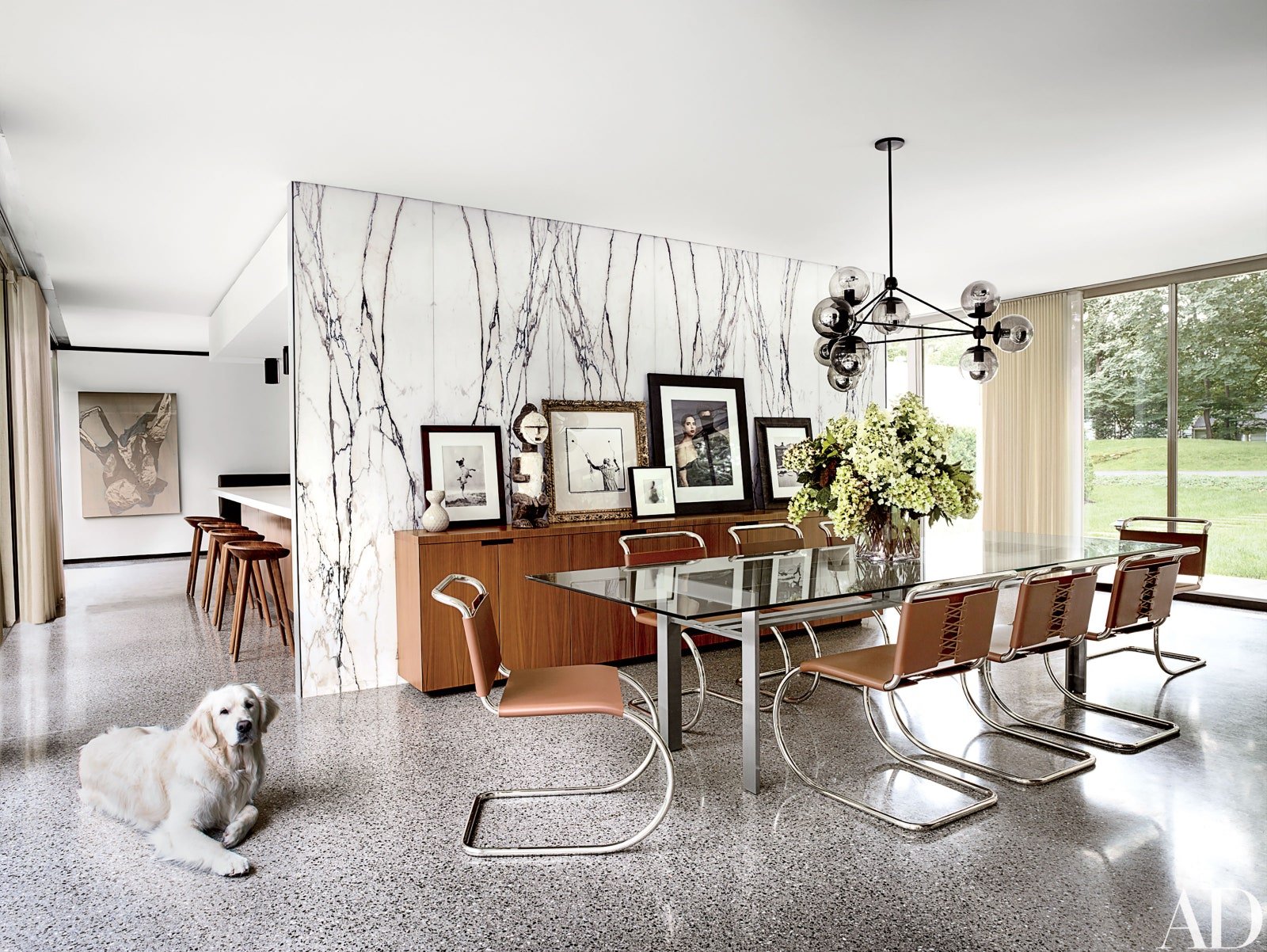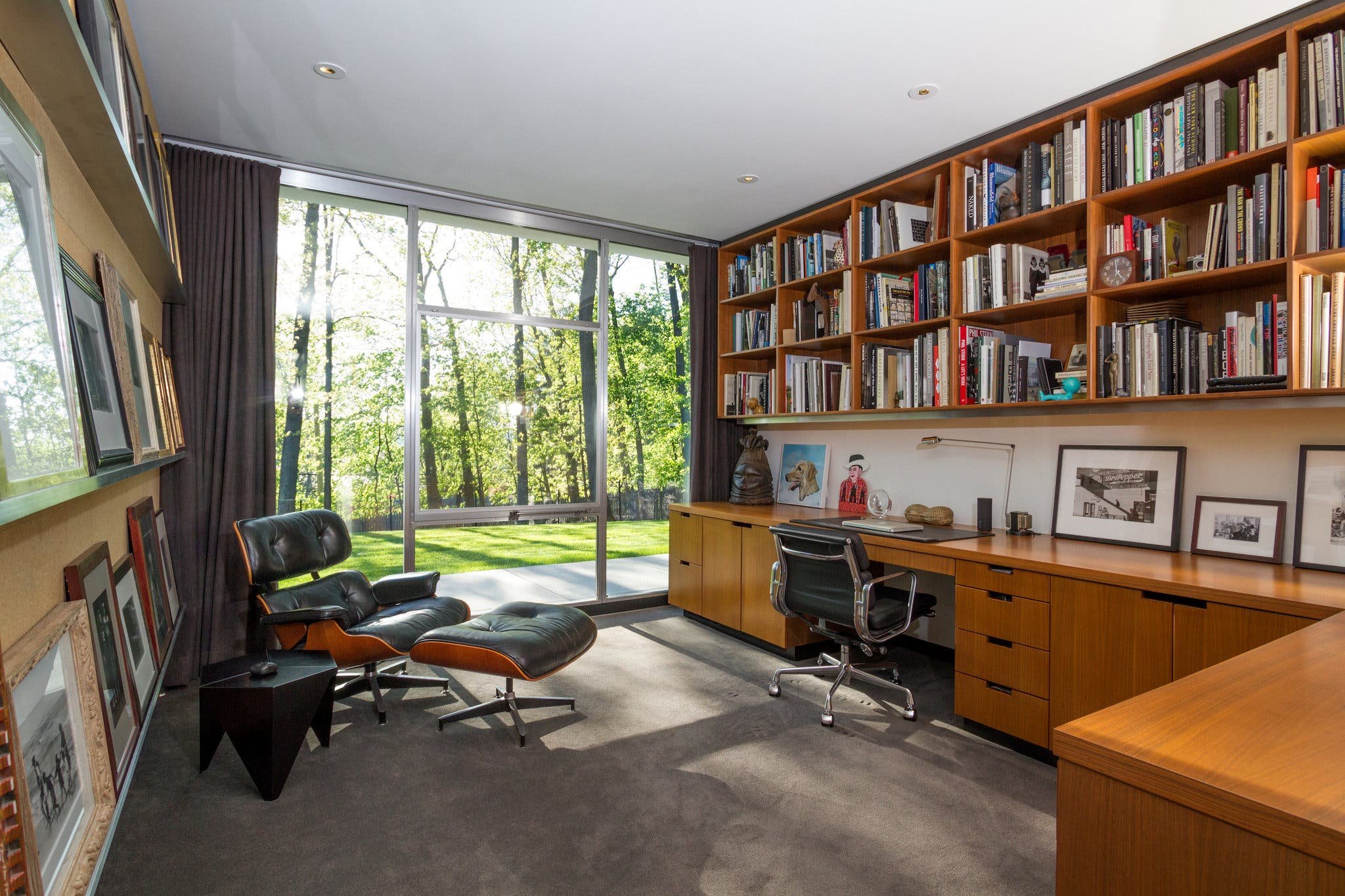Can JoCo Tame the Daily Beast?
The uneasy marriage of a magazine legend and a scoop machine.
The uneasy marriage of a magazine legend and a scoop machine. By Justin Miller/Deputy Editor, Intelligencer
Editor’s note: For more on Joanna Coles, listen to Episode 21 of Print Is Dead (Long Live Print!).
The Daily Beast had another scoop. On her first week on the job as chief creative and content officer, Joanna Coles carried a tip into the newsroom: A friend told her that Barron Trump would attend NYU for college. She told a group of staff to write it up for a new gossip column she wanted, called “Beast Buzz.”
After trying to confirm the story, the team came up empty, but Coles pressed them to publish. The task fell to Tracy Connor, the editor-in-chief who eschews her office for a simple desk among reporters and editors. As she wrote up the blind item without a byline, Coles said in a voice loud enough for all to hear: “We will see how it does. Let’s hope it’s true!”
Brought on to revitalize the publication, the former editor of Cosmopolitan is busy remaking The Beast in her own image: buzzy, glitzy, and unafraid of controversy. “I’m going to blow it up,” she said this past weekend at the White House Correspondents Dinner, where she was hunting for talent. “We’re going to be pirates.”
Already, though, she is clashing with the hard-news scoop machine she is trying to operate, according to multiple staff members, who spoke on the condition of anonymity to protect them from retaliation for speaking out. By the end of her first week, at least a dozen staff were looking elsewhere for jobs or hoping for buyouts, and by the end of her second, two were on the way out. For those who remain, fear of layoffs is widespread and morale is so low that some have been crying behind closed doors.
“I’m going to blow it up. We’re going to be pirates.”
The speed of the takeover caused whiplash. On Monday morning, April 15, Barry Diller’s IAC announced a partnership with Coles and Ben Sherwood: IAC would retain a majority stake while the two media veterans bought the rest for an undisclosed amount and were made salaried employees. Coles was placed in charge of the Beast’s editorial operations and Sherwood, the former chief of Disney and ABC’s combined television units, was made chief executive and publisher.
“These are tough times for digital journalism, but the combined experience, expertise and energy of Ben and Joanna have made me an optimist about their ability to make the Beast an enduring and successful enterprise,” Diller said in a statement. (A spokesperson told me IAC is investing in The Beast for its next chapter.) A knowledgable observer agrees, saying “they will be great for the Beast in the long run if they don’t fuck up the transition.”
That afternoon, the staff rushed to IAC’s headquarters, a swooping, Frank Gehry building overlooking the Hudson. It was the fullest the office had been since before the pandemic. Just after 2pm, Coles snatched a microphone and breezed through her considerable résumé before announcing two new jobs that would show what sort of stories she wanted to prioritize. Effective immediately, she would hire a Chief Lauren Sanchez Correspondent and a Chief Fruits and Vegetables Correspondent, based in Montecito, California, to cover Meghan Markle’s American Riviera Orchard, which she was “completely obsessed” with. (The Beast would later publish six stories on Markle’s jam in as many days.)
“They were coming in here to install some warped vision of the Daily Beast that is not what we do,” said a Daily Beast staffer of several years. “Her version of news is trend pieces and listicles.” Sherwood followed up by telling the staff, which totals about 100 including the business side, that they would work harder than ever. “On their first day, they delivered their speech and they lost the newsroom almost immediately,” the staffer continued.
By the end of the meeting, where the editor-in-chief was seated in the crowd and did not speak, the staff had only a vague notion of what their bosses would do or who was even in charge. “If I survive and stay, do I work for the editor-in-chief or Joanna?” one staffer said. “Everyone who grew up in a newsroom is confused by what a creative director does.”
—
Continue reading at New York magazine.
ORIGINALLY POSTED ON 02 MAY 2024 ©VOX MEDIA LLC
Back to Entry/Points
Pourovers, Patrón, and Print
In Marfa, Texas, you can (maybe) glimpse a future for independent media.
In Marfa, Texas, you can (maybe) glimpse a future for independent media. By Sasha von Oldershausen/The New York Times
The Sentinel’s HQ in Marfa, Texas.
Editor’s note: We’ve been big fans of The Big Bend Sentinel since we stumbled upon it a few years ago. It’s just another reason to visit Marfa, Texas. Oh, also, their operation might be the future of media, too.
When Landrie Moore was looking for a venue for her destination wedding, she knew she wanted a space that really reflected life in this small, remote desert town.
Her guests would be coming from as far as Ecuador and England, and Ms. Moore, 35, who works for a boutique hotel firm, hoped to provide a memorable and authentic experience for those travelers. When you visit a new place, she said in a phone interview, “you want to feel like a local.”
Which is why she decided to get married mere feet from the office of The Big Bend Sentinel, the region’s oldest newspaper (where I worked as a reporter in 2014 and 2015).
Ms. Moore’s wedding, in June, was the first of five held last year in the Sentinel, a cafe and cocktail bar in the newspaper’s newly renovated office building. The space is perhaps the most visible sign that The Big Bend Sentinel is under new ownership: Maisie Crow and Max Kabat, who moved to Marfa from New York City in 2016, took over last year from Robert and Rosario Halpern, the paper’s publishers of 25 years.
“We kind of saw us in a way,” Mr. Halpern said of the couple.
“Buy a newspaper?” Mr. Kabat, 37, recalled thinking when the Halperns first approached him and Ms. Crow about a potential sale. “What are we, idiots?” Their background is in consulting and documentary filmmaking. (The New York Times is a producer of a forthcoming film by Ms. Crow.)
Since 2004, nearly 20 percent of local papers in the United States have folded or merged, according to a 2018 study by the Hussman School of Media and Journalism at the University of North Carolina. In many cases, publishers have been replaced by a narrow network of large investment groups that have acquired hundreds of failing newspapers.
But Marfa is no ordinary town, and its newsweekly has been a pillar of the community for nearly a century—long before Marfa became cool. The Big Bend Sentinel’s pages are pasted up with major issues of the day (the death of Antonin Scalia, the Supreme Court justice, on a nearby luxury ranch, for example, and the possibility of a border wall just 60 miles away) alongside valedictorian announcements, photo spreads of homecoming events and advance coverage of the town’s many festivals.
Before Mr. Kabat and Ms. Crow (who is originally from Corpus Christi, Texas) took over, the paper ran solely on ad sales and subscriptions. “It was able to sustain itself on a shoestring, but we wanted to expand the potential,” Ms. Crow, 38, said. They hoped to bring locals closer, physically, to the institution covering their hometown.
Max Kabat and Maisie Crow, publishers of The Big Bend Sentinel.
“Buy a newspaper? What are we, idiots?”
So they bought the building previously occupied by Padre’s, a dive bar that went out of business in 2016, and before that, a funeral home, and began renovations.
“We had to sage the whole place,” said Callie Jenschke, whom the couple hired to handle interior design.
—
Continue reading at The New York Times.
ORIGINALLY POSTED ON 25 FEBRUARY 2020 ©THE NEW YORK TIMES COMPANY
Back to Entry/Points
Graydon Goes Shopping
Shoe horns, lampshades and CBD-infused elixirs are among the goods Graydon Carter is selling at a new newsstand-style shop in New York.
Shoe horns, lampshades and CBD-infused elixirs are among the goods Graydon Carter is selling at a new newsstand-style shop in New York. By Ruth La Ferla/The New York Times
Graydon Carter’s retail venture, Air Mail Newsstand, is an extension of Air Mail, the digital newsletter he started with Alessandra Stanley. (Photograph by Daniel Paik)
Call it instinct, or a second sight: Graydon Carter claims he knows a reader when he sees one. While scanning the streets of Manhattan’s West Village this week, Mr. Carter said pointedly, “In this part of the city, you’ll have many more readers than nonreaders.”
That may be why he chose a stretch of Hudson Street near Perry Street in the Village as the site of a new retail venture, Air Mail Newsstand, which is an extension of the digital newsletter, Air Mail, he started in 2019 with Alessandra Stanley.
The shop arrived in Manhattan after Air Mail opened others in London and Milan. Its merchandise, like the newsletter it is named after, is meant to appeal to an urbane crowd.
A rigorously edited selection of books and high-end glossies like The World of Interiors, Kinfolk, and Beauty Papers is supplemented by various novelties with a statusy, you-can-only-find-it-here appeal. Say, a curly brass shoehorn ($145); a palm-tree-patterned Chez Dede lampshade ($345); old-fashioned typewriter paper ($15); or an Air Mail logo baseball cap ($30) like the one Larry David wears in recent episodes of Curb Your Enthusiasm.
Is Mr. Carter, Vanity Fair’s former editor in chief, adopting a new identity as a shopkeeper? Not quite. But “there is a merchant inside everybody,” he said unflappably.
He sees retail as an inevitable adjunct to publishing, a symbiosis that has also been recognized by brands like Monocle, which had a shop in the West Village, and by Highsnobiety, a sneaker blog that evolved to include an online store and a twice-yearly publication that won the National Magazine Award for general excellence this year.
“In a magazine you can’t just sell ideas,” Mr. Carter, 74, said. “If you recommend a book you want to help the reader find that book. If you’re writing about a TV show, you tell the reader where it’s streaming.”
The Air Mail Newsstand was designed by Basil Walter, an architect who worked with Mr. Carter to develop the Waverly Inn. (Photograph by Justin M. Weiner)
Air Mail Newsstand, which is inside a 1905 rowhouse, has honey-oak floors, brass finishings, and a mirrored bar that serves oddly tangy coffee. Magazines are displayed at the front of the shop and a rotating selection of books is at the rear. At the moment, 100 titles are gathered under the heading, “Female Authors, Past and Present,” a highbrow grouping including works by Jane Smiley, Zadie Smith, Hilary Mantel, and Daphne du Maurier.
The shop was designed by Basil Walter, an architect who worked with Mr. Carter to develop the Waverly Inn, his restaurant in the West Village, and spaces where Mr. Carter hosted parties as the editor of Vanity Fair.
Like the canniest of merchants, Mr. Carter is himself a well-informed and unabashedly zealous shopper. Air Mail Newsstand’s selection of CBD-infused elixirs, lapel pins, and other goods—like many of the items featured by the newsletter’s e-commerce arm, Air Supply—is “based on things we’ve tried out and like,” he said.
Mr. Carter, while seated at a table at the rear of the shop on Tuesday, pulled out an object as flat and trim as a credit card. “This is an amazing tape recorder,” he said with the candid delight of a boy discovering his first Erector Set. The device, which costs $159, is sold at Air Mail Newsstand and, Mr. Carter explained, can connect to a smartphone.
He acknowledged that it seemed counterintuitive for a digital publication to open a newsstand-style shop—especially as both print magazines and traditional newsstands have been on the decline. But Mr. Carter is undaunted. “We love print, obviously,” he said.
Air Mail has occasionally published print versions of the newsletter and an annual or biannual print product is no pipe dream. “We’ll do print at some point,” Mr. Carter said.
“But we only have so many hours in a day, and I’m retired—well not really retired,” he conceded with a touch of faux regret. “I should be playing golf right now.”
ORIGINALLY POSTED ON 19 APRIL 2024 © THE NEW YORK TIMES COMPANY
Back to Entry/Points
How to Create a Great Magazine Out of Thin Air
Fifty years ago, Texas Monthly was little more than an idea dreamt up by a local lawyer with minimal experience in journalism. Then it was an actual thing. How did that happen?
Fifty years ago, Texas Monthly was little more than an idea dreamt up by a local lawyer with minimal experience in journalism. Then it was an actual thing. How did that happen? By William Broyles
Founder, Michael R. Levy (left) and founding editor-in-chief William Broyles in the Texas Monthly office around 1974.
Editor’s note: This article was part of Texas Monthly’s special fiftieth-anniversary issue.
It would not be the last time a writer pointed a loaded gun in my face during Texas Monthly’s first year.
In the fall of 1972, Gary Cartwright and I were making the rounds in Dallas. Gary was a journalist with a national reputation who had agreed to write a story for the first issue of a new magazine started by some young nobodies with no experience. I was the rookie editor, the nobody of nobodies. Gary was a real catch for us. If he were to write for our first issue, it would give us credibility, of which we had zero. But before Gary started writing, he wanted to put me to the test.
Texas Monthly’s premiere issue, February 1973
He took me to meet his crusty old editor at the Dallas Times Herald, who thought I was one of their copy boys. Then came the Dallas nightlife challenge. We started at the Colony Club, one of the classier joints on what remained of Dallas’s notorious Strip. I had a few drinks. Gary had more than a few, plus other substances, some of them legal. We met exotic dancers at various bars. They all knew Gary, as did the bartenders. Come midnight, Gary was just hitting his stride. He was in Hunter Thompson’s league as far as partying went. I was not.
Back then our per diem was $5 for food and $8 for a room. Gary, who was used to Sports Illustrated expense accounts, was not impressed. He’d arranged for us to stay in the apartment of his friend Pete Gent, so I went back there while Gary soldiered on into the Dallas night. Gent had played for the Dallas Cowboys and would soon publish a best-selling novel about life in the NFL. Like Gary, he was a substance tester, boundary pusher, and norm exploder. He was supposed to be out of town.
It was a restless night. Gent’s apartment was in the Love Field flight path. Two years earlier I’d been patrolling the jungles of Vietnam. Every two minutes or so, as I lay on Gent’s couch, a plane would come screaming into a landing. To me, each one sounded like enemy artillery fire. I had to fight the urge to yell “Incoming!” and throw myself onto the floor. I had just gotten to sleep when all the lights came on. A loaded gun was inches from my face. A very large human, under the influence of something far stronger than alcohol, was holding it.
Pete Gent.
“Who the f— are you?” he asked.
Gent thumbed the hammer back, his finger closing around the trigger. Gary was standing in the doorway. Without taking my gaze off Gent’s pinballing eyes, I spoke to Gary.
“Please. Tell him who I am.”
“You know this asshole?” Gent asked Gary.
Gary looked at me, then shook his head.
“I’ve never seen him before in my life.”
That memory comes to me while I’m reading through a bound volume of the first year of Texas Monthly. Dan Goodgame, the current editor in chief, has loaned me an office on the seventeenth floor of an elegant tower on Congress Avenue. Texas Monthly occupies the entire floor. That 1973 year was a half century ago, and we were all so young and felt like we could do anything. In those days each issue was a tightrope walk with no net. Each was a minor miracle. At some point years later, the miraculous became the normal, momentum built, the improvised became an institution, the guerrilla operation became an army. It’s all beyond what I could have imagined fifty years ago.
Trying to find the bathroom, I get lost, then lost again trying to find the kitchen, then lost again trying to get back to my temporary office. Along the way I walk down a hallway lined with the magazine’s nearly six hundred covers, arranged chronologically and mounted behind glass. I pass a state-of-the-art recording studio, where an audio team is producing a podcast episode. Texas Monthly isn’t just a magazine anymore. It’s a diversified media company with a strong online presence supported by a highly committed new owner, Randa Duncan Williams.
—
Continue reading at texasmonthly.com
ORIGINALLY POSTED IN FEBRUARY 2023 ©TEXAS MONTHLY
Back to Entry/Points
The Last Days of Time Inc.
An oral history of how the pre-eminent media organization of the 20th century ended up on the scrap heap.
An oral history of how the pre-eminent media organization of the 20th century ended up on the scrap heap. By Sridhar Pappu and Jay Stowe/The New York Times
Editor’s note: To accompany our John Huey interview, we wanted to share this exquisite oral history of Time Inc., as reported by The New York Times.
It was once an empire. Now it is being sold for parts.
Time Inc. began, in 1922, with a simple but revolutionary idea hatched by Henry R. Luce and Briton Hadden. The two men, graduates of Yale University, were rookie reporters at The Baltimore News when they drew up a prospectus for something called a “news magazine.” After raising $86,000, Mr. Hadden and Mr. Luce quit their jobs. On March 3, 1923, they published the first issue of Time: The Weekly News-Magazine.
In 1929, the year of Mr. Hadden’s sudden death, Mr. Luce started Fortune. In 1936, he bought a small-circulation humor publication, Life, and transformed it into a wide-ranging, large-format weekly. Later came Sports Illustrated, Money, People and InStyle. By 1989, with more than 100 publications in its fold, as well as significant holdings in television and radio, Time Inc. was rich enough to shell out $14.9 billion for 51 percent of Warner Communications, thus forming Time Warner.
The flush times went on for a while. But then, starting about a decade ago, the company began a slow decline that, in 2018, resulted in the Meredith Corporation, a Des Moines, Iowa, media company heavy on lifestyle monthlies like Better Homes and Gardens, completing its purchase of the once-grand Time Inc. in a deal that valued the company at $2.8 billion. The new owner wasted no time in prying the Time Inc. logo from the facade of its Lower Manhattan offices and announcing that it would seek buyers for Time, Fortune, Sports Illustrated, and Money. The deadline for first-round bids was May 11.
We reached out to more than two dozen editors and writers who worked at Time Inc., asking them to reflect on the heyday of this former epicenter of power and influence, as well as its decline. These interviews have been condensed and edited.
—
Continue reading at nytimes.com
ORIGINALLY POSTED ON 21 MAY 2018 © THE NEW YORK TIMES COMPANY
Back to Entry/Points
Less Than Words
In his 2018 TED talk, illustrator Christoph Niemann lets his pictures do the talking.
In his 2018 TED talk, illustrator Christoph Niemann lets his pictures do the talking.
Without realizing it, we’re fluent in the language of pictures, says illustrator Christoph Niemann. In a charming talk packed with witty, whimsical drawings, Niemann takes us on a hilarious visual tour that shows how artists tap into our emotions and minds—all without words.
Back to Entry/Points
The House that Fred Built
The legendary Rolling Stone and GQ art director’s house looked like a pretty sweet hang.
Inside legendary designer (GQ, Rolling Stone) Fred Woodward’s former Westchester home.
THIS ARTICLE ORIGINALLY APPEARED IN THE SEPTEMBER 2015 ISSUE OF ARCHITECTURAL DIGEST.
—
Sometimes you find the house. Sometimes the house finds you.
Janice and Fred Woodward have felt this way ever since they settled into their first home as newlyweds—a charming one-bedroom walk-up in New York City’s Greenwich Village—in the 1980s. And it continued as they moved north to a beloved house the suburbs, where they raised two children. “We’ve been fortunate,” says Fred, the longtime design director of GQ. “I’ve always believed that every house we’ve lived in found us.” Never was the sense of kismet stronger than when the couple happened upon their current residence, a modernist glass box set on three bucolic acres in Briarcliff Manor, New York. “Seeing this place for the first time, my heart stopped. I remember thinking, This is remarkable—someone has built their own personal one-story skyscraper.”
The Woodwards: Fred (left) and Janice.
That someone was Roy O. Allen, a partner at the venerable firm Skidmore, Owings & Merrill and perhaps best known as the architect of the US Steel Building (now One Liberty Plaza) in lower Manhattan. Allen had built the home in 1957 and lived in it for about ten years. A couple who’d bought the residence in the early ’70s and had spent four decades there was selling it when Fred came across the listing in a newspaper real-estate insert. “The photo in the ad was no bigger than a postage stamp,” he recalls. “But I could tell the house was something rare, so Janice and I drove over. Afterward, I couldn’t stop thinking about it.”
Once he and his wife pulled the trigger, Fred asked Los Angeles–based interior designer Brad Dunning to have a look at what they’d acquired. “For me,” Dunning says, “all roads lead to or from Mies van der Rohe, so when I saw that glass-and-steel pavilion nestled in the woods, it was a vision. Still, the paint was peeling and the curtains were in tatters. It all made for a midcentury gothic scene. But if you looked hard, you could see a gem.”
And so began a multiyear restoration. At first the Woodwards thought they could keep it simple. “Painting, the small stuff,” Janice says. “We planned on moving in quickly.” But speaking with Dunning and Brooklyn-based architect Sebastian Quinn helped them recognize they had an opportunity to do something special. Which is not to say they weren’t nervous. “We didn’t want to live in a museum,” explains Fred. “We wanted to preserve the spirit but also make it our home. It was a delicate dance.”
Dunning reminded the couple that if Allen were building the house today, he’d employ the same standard he did almost 60 years ago: using the most modern finishes and furnishings available. “My goal is always to respect the original architecture,” says the designer. “But the furniture, art, and objects should be eclectic and can even be contemporary. If it’s all retro or period, you end up with a stage set.”
The biggest changes were replacing the terra-cotta floor with a deep-gray terrazzo and adding the fireplace. Fred initially wanted to install a Scandinavian-style hanging fireplace in a corner of the living room. But after Dunning noted that it would obscure sight lines to the outdoors, Quinn came up with the solution of putting an open fireplace between the living and dining areas, effectively creating a semiseparate dining space. “That was a game changer,” says Fred, who spends lots of time on the living room’s L -shaped sofa, which faces the hearth but also takes in captivating views of the grounds. “Can’t you see I’ve already worn a groove in the cushions?” he jokes.
Janice and Fred share the house with their now-college-age children, Olivia and Hank, who took some time to warm to it. To be fair, a glass house makes demands on the inhabitants. It’s about living—every day—with the philosophy of minimalism. “Believe me,” Fred says with a laugh, “that wasn’t easy for me.” Thanks in part to a long career working with creative people (before GQ he was the art director of Rolling Stone for 14 years), he had amassed a collection of great photographs as well as furniture. “We realized we needed to strip down our lives,” he says. “The house made us recognize what we really needed. It felt good.”
Walking the grounds on an early summer evening, Fred and Janice consider the question: Why live in a glass house? After pausing for a moment Fred offers, “I’ve dreamed of a home like this since art history class my freshman year of college. I remember clearly the moment the professor showed a picture of a Miesian house. I was a kid from a small town in Mississippi, and I couldn’t believe such beauty was possible—that you could live inside art. That image conjured a world I have spent my life pursuing .”
Janice nods, adding, “My favorite time of day is sunset, when I stand outside and see the house glowing warm and serene, like a Japanese lantern. And I can’t decide: Do I want to be out here, admiring the beauty, or do I want to be inside the beauty? It’s a lovely problem to have.”
Fred agrees. He says that some nights, as he’s driving up to the house after work, he almost can’t believe his good fortune: “All I hear is that Talking Heads song with David Byrne singing, ‘This is not my beautiful house.’ But then I remember, Yes, it is!”
Fred Woodward was the long-time art director at GQ, Rolling Stone, and Texas Monthly, and inspiration to almost everybody who designs magazines.





























